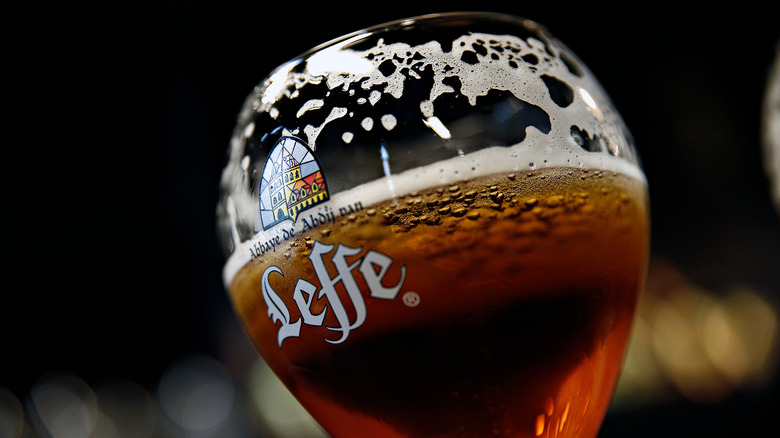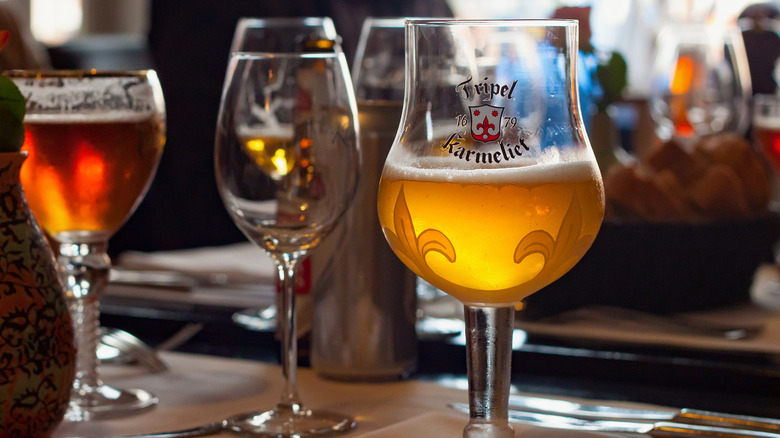What Exactly Makes A Beer A Tripel?
We may receive a commission on purchases made from links.
Belgium beers are known for their strong and unique flavors, encompassing farmhouse ales, saisons, and tripels. Wait — what exactly is a tripel? Is it three times the amount of flavor and alcohol content? As it turns out, tripel does translate to triple, but there isn't really a definitive formula to what gives it this name. A Belgian tripel is stronger in alcohol content than a dubbel (a double), but less strong than a quadruple. More technically speaking, tripels are also defined by the amount of malt with fermentable sugars in the brew.
To understand what exactly this style of beer is, we'll look at the beer that initially popularized this style. First brewed in 1934, Westmalle tripel is considered to be the mother of all tripels, clocking in at 9.5% ABV. While not all tripels are this strong, they do typically range from 7% to 10% ABV. The Westmalle tripel has the signature banana bread flavor found in many Belgian beers, although tripels can also have flavors of honey, fruit, spices, citrus, wheat, and florals. Tripels are very similar to Belgian golden ales, but tend to be a bit more flavorful and slightly darker in color.
You might see the phrase "Trappist" on the label of many Belgium tripels, as well as dubbels and quads — this signifies that it was made by monks inside the walls of a Trappist abbey (a monastery). Not all tripels are made by monks, but some breweries often try to imitate this style, adopting the label "abbey-style."
How to drink Belgian tripels
Despite being a beer with a high percentage of alcohol, tripels are surprisingly easy to drink. The golden color doesn't make the brew look strong (compared to, say, a dark stout beer) and the lighter flavors, such as fruit, florals, and honey, make this beer pleasant to sip on. Don't be fooled, though — tripels will hit you much quicker than other ales, especially the ones closer to 10%.
Belgian tripel beers are rarely served in the standard pint glass, but rather a tulip-shaped glass with a tall or short stem, like this set of four beer glasses from Libbey. The curved bowl and smaller mouth help concentrate the flavor and aroma, which are further bolstered by pouring the beer correctly. A tripel is not necessarily a beer best-served ice cold — between 40 and 45 degrees Fahrenheit is a good range to allow the aroma molecules to be released.
The subtle sweetness and smooth drinking quality of Belgian tripels make them a good pairing for cheese boards, especially ones with creamy cheeses. Grilled meats and vegetables also work well alongside this beer style. If you like beer with spicy flavors, Asian dishes that pack some heat are nicely balanced by the slight sweetness and maltiness of a tripel. If none of these pairings are your jam, know that Belgian tripels are quite versatile and can be paired with a wide variety of dishes.

